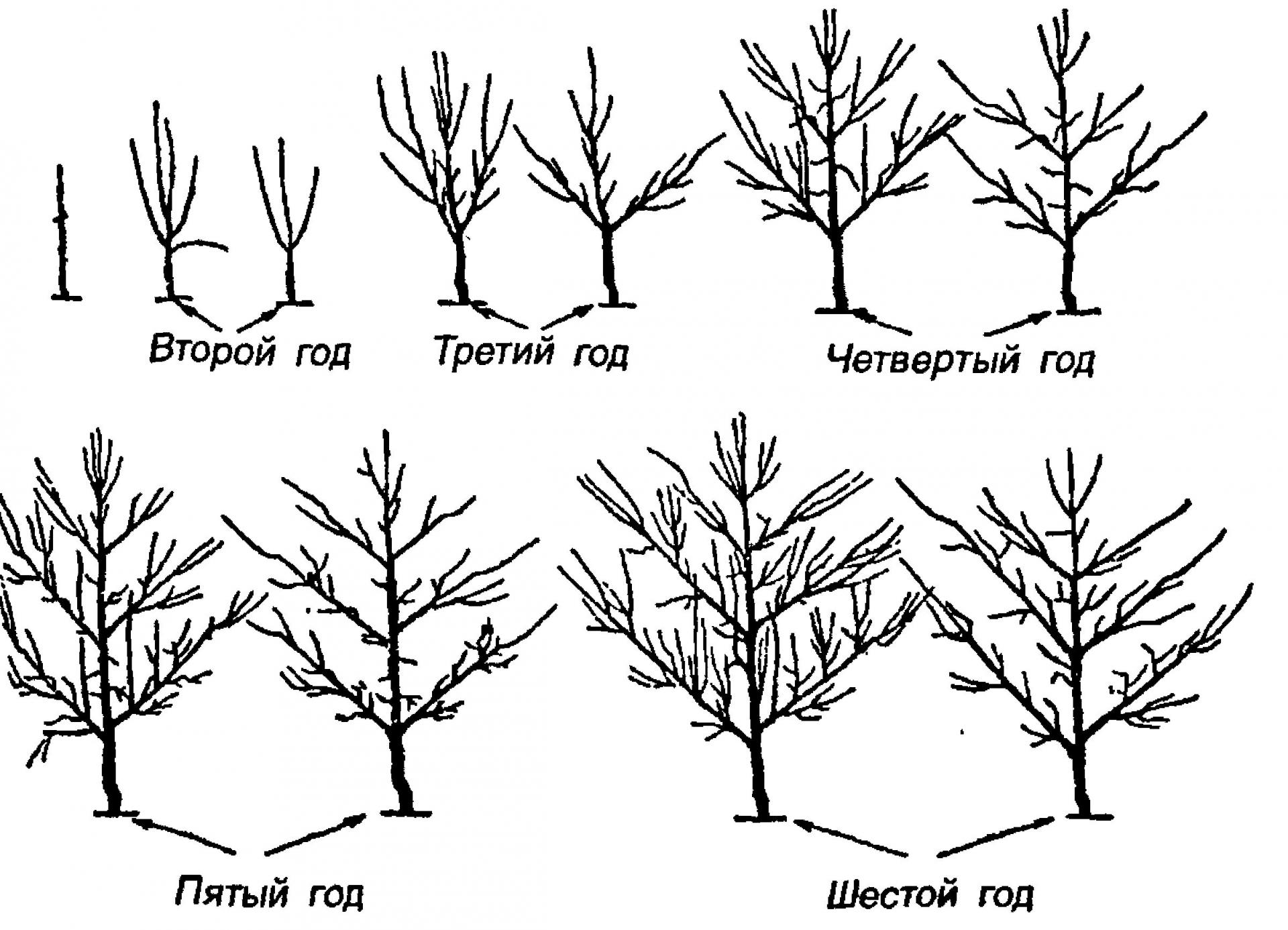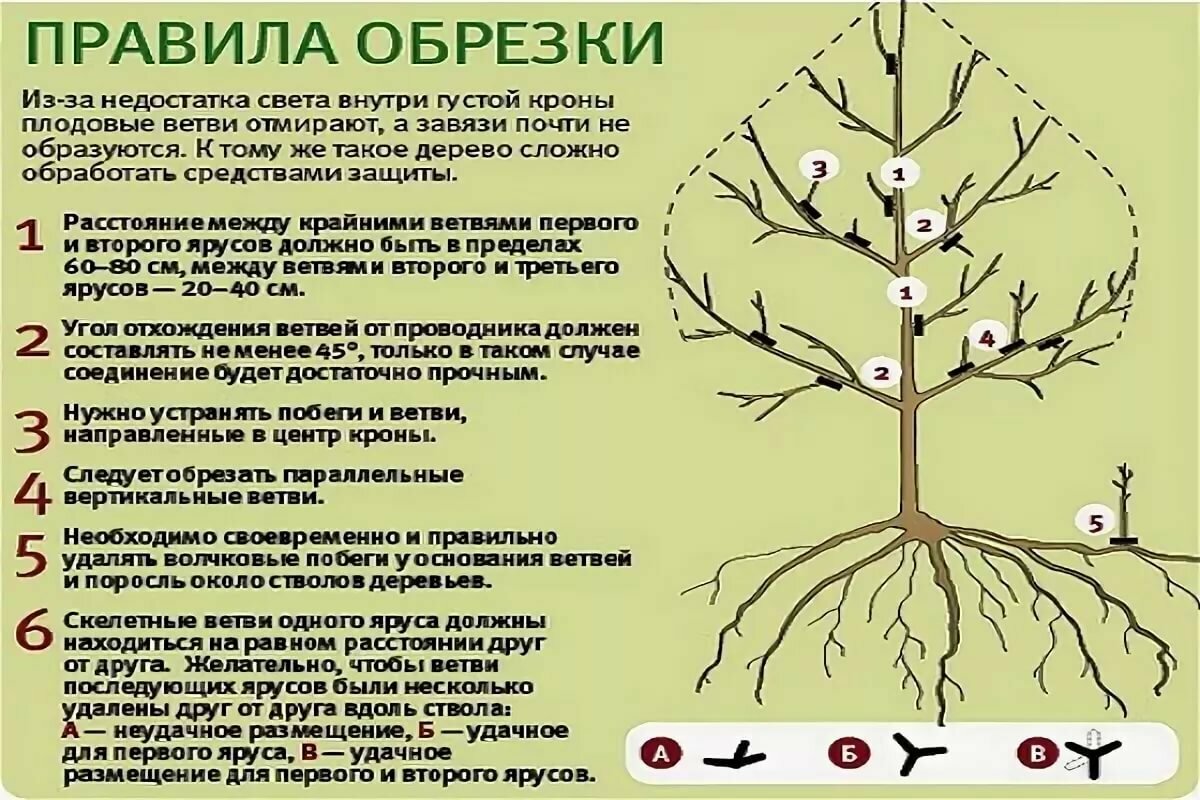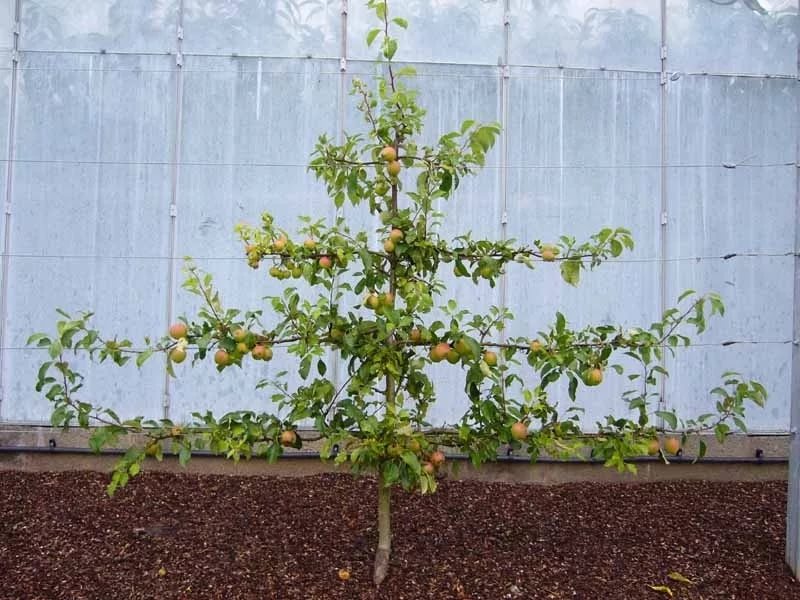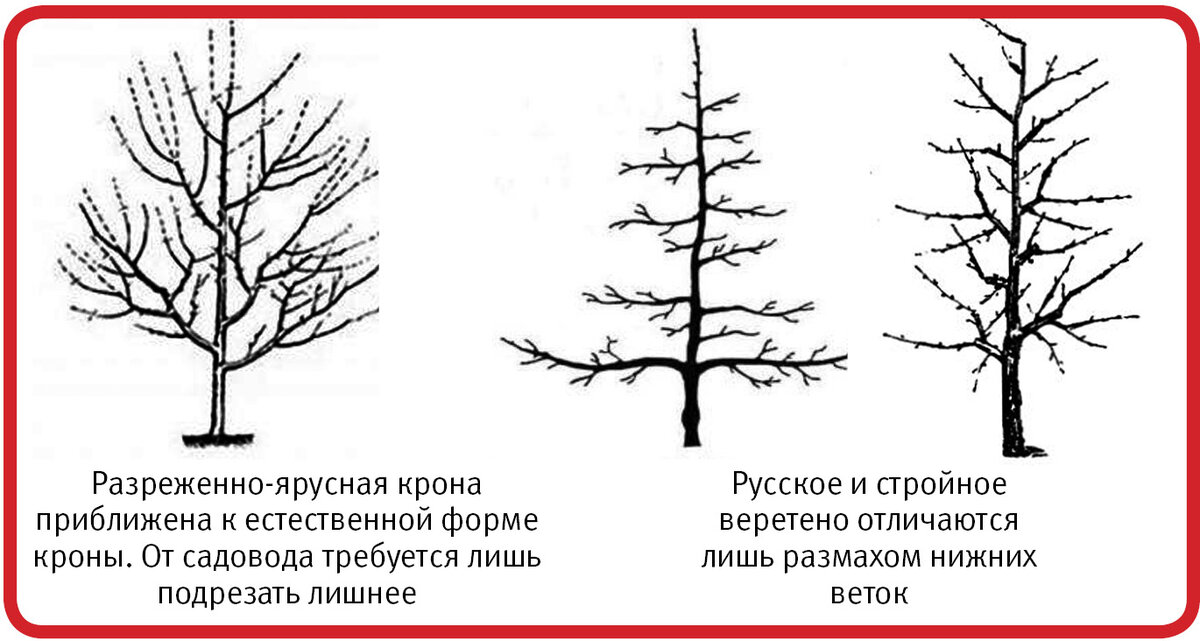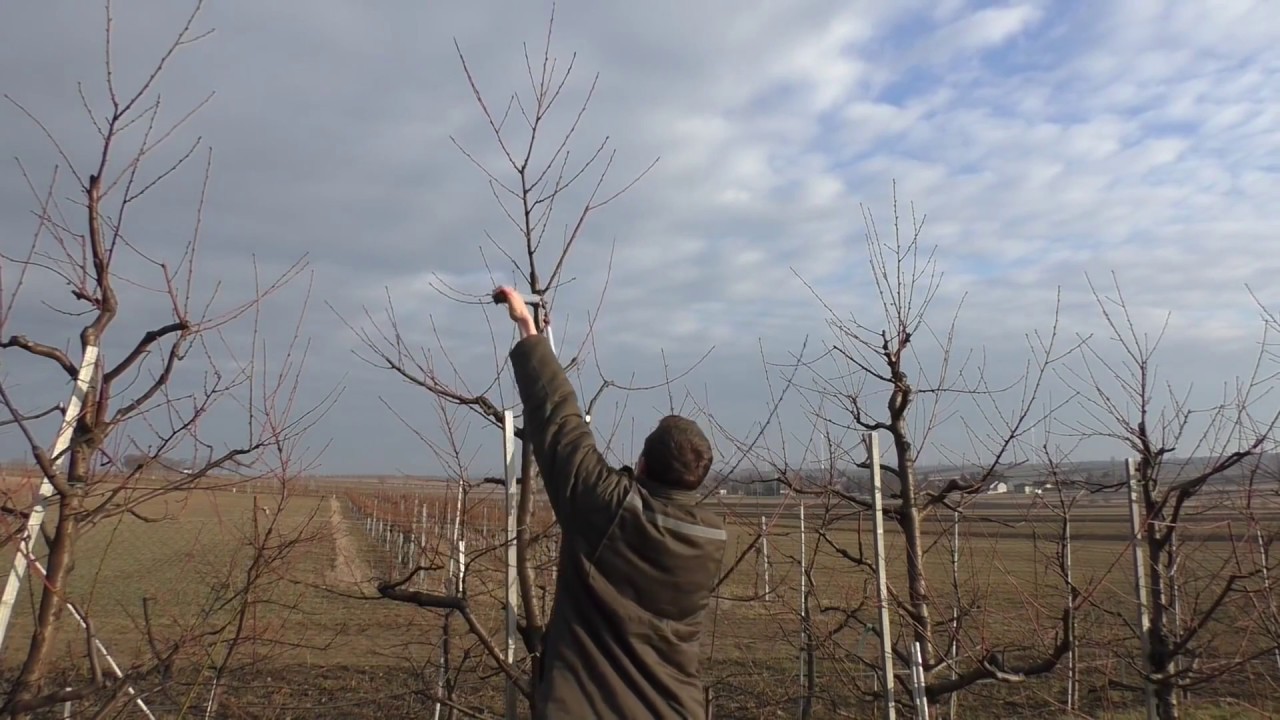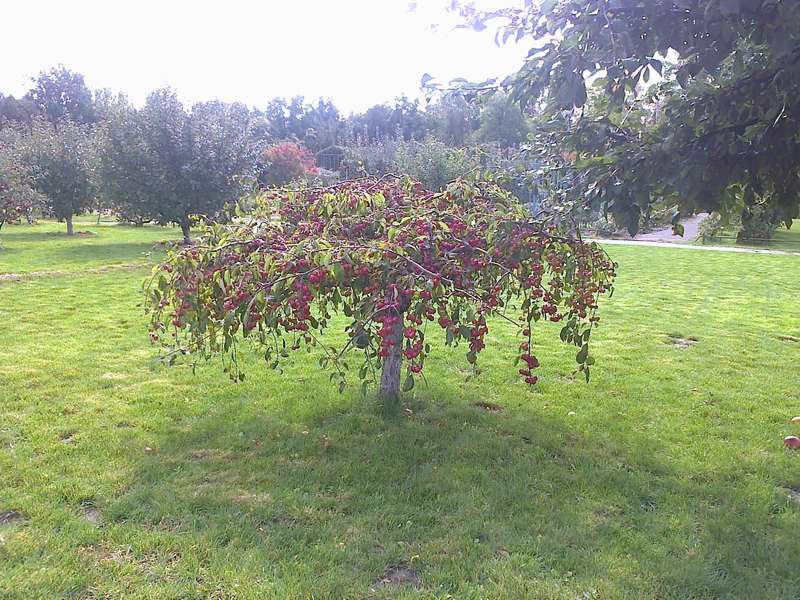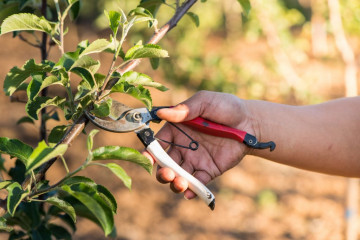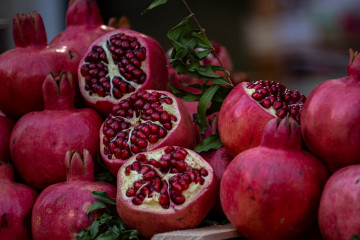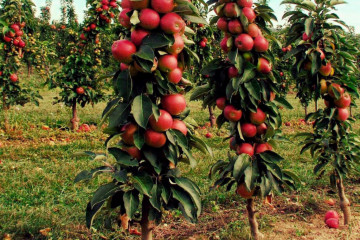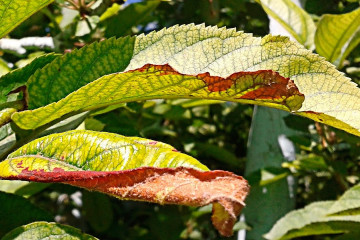Apple tree formation - in a young tree, without a central conductor
Content:
- Reasons for crown formation
- What is the best time to prune
- Rules for the formation of an apple tree crown
- Tools and materials required for work
- Basic schemes
- The specifics of the formation of young and adult apple trees
- Features of the procedure
- Apple tree care after pruning
- The most common pruning mistakes
- Experienced gardening tips
Anyone who dreams of a large garden of fruit trees should learn how to form an apple tree. After all, not a single table can do without aromatic apples. Ripe fruits can be used to make delicious jam or compote. In more detail, how to form an apple tree, long-time practicing gardeners will tell and show. But beginners should prepare for the procedure and theoretically.
Reasons for crown formation
When shaping the crown of a tree, the gardener:
- regulates fruiting;
- stimulates the growth of young apple trees;
- takes care of increasing the resistance of the tree to adverse weather conditions (strong wind, snow).
An apple tree left unattended quickly acquires a dense crown. From year to year, actively overgrowing with a large number of young shoots, the main branches are becoming heavier. At some point in time, the crown may not support its own weight, the branches will begin to break off under even very insignificant gusts of wind. At the site of the breakage, wounds appear, the tree begins to ache.
But even if this does not happen and the branches remain intact, the apple tree will not feel the best way. The dense leaves will prevent sunlight from reaching the fruit. As a result, apples will become tasteless, lose their attractive appearance, and there will be fewer of them.
What is the best time to prune
The first pruning is done one year after planting. Gardeners who spend it earlier than the specified period are at risk. The young tree has not yet matured and therefore, does not supply the crown with the necessary amount of nutrients, the roots. Pruning too early can make the tree sick.
Removal of dry branches and young growth is carried out in the spring - in March-April or autumn. Spring pruning helps the tree in the future to withstand the weight of the fruit, and autumn pruning helps its own branches under the weight of snow.
Rules for the formation of an apple tree crown
When self-forming the crown of an apple tree, the gardener must observe the following simple rules:
- the cuts made must be treated with a thin layer of garden varnish. If there is too much of it, it will flow under the bark and block access to oxygen;
- sawing should be done from the bottom up above the upper kidney at a slight angle (in this case, water will not collect at the top of the cut);
- branches extending from the central conductor should be 2 times thinner than the trunk located above them;
- the ideal angle between the branches and the trunk should be 50-60 degrees, if the growth grows at an angle of 40 degrees, it becomes fragile.Horizontal angles are permissible, provided that all shoots grow with their ends up (spacers and stretch marks are used to change the angle of branching);
- if we are talking about the formation of the crown of a young apple tree, then they always try to prevent the growth of competing branches, they are cut off or pinched;
- before pruning, the ratio of the head and roots should be determined. The following proportions must be observed - cut off 35 cm from the top of the tree by 45 cm of roots.
Tools and materials required for work
To carry out work on pruning an apple tree you will need:
- pruner for branches thinner than 2 cm;
- saw for thick branches;
- garden pitch for processing cuts.
You may also need varnish brushes and gloves for safe gardening.
Basic schemes
There are several schemes for the formation of the crown of a tree. The choice depends on the variety, and sometimes the weather conditions in which the tree grows. To give the crown the desired shape, they use such methods as:
- pruning (allows you to regulate the growth of the tree);
- green operations (pinching, getting rid of adults, but not ripe shoots);
- breaking off the buds (the growth of shoots that can become superfluous stops).
Tier-discharged crown scheme
Almost natural type of growth of branches. To form an apple tree:
- a tree at the age of 1-2 years must be cut at a height of 70-100 cm, the cut is made on the bud opposite to the place of the scion;
- in three-year-olds, the tip is cut off again, 5 buds should be left on the last branches;
- in the fourth year, skeletal branches of all tiers are distinguished, the lower tier is created from 3 branches, and the upper one from 2-3.
An adult tree is a multi-tiered sparse structure of 8 skeletal branches. The growing crown must be constantly pruned so that the height of the tree does not exceed 3-4 meters. To achieve this, the center conductor is completely cut off. It is replaced by the side branch below. Excess branches going south are cut off, and those going north are shortened. If the length of the branches does not exceed 30 cm, they are not touched, fruits are formed on them. The optimal stem height is 50-120 cm. The cooler the climate (Siberia, Ural), the shorter the stem should be.
Vertical palmette
The crown of the apple tree begins to form from the skeletal branches. Everything that is on the sides must be cut off. As the tree grows, all branches that are knocked out of the same row are removed.
Fusiform
In the fall, using spacers, all new shoots are bent, giving them a horizontal position. In spring, the main branch is cut 30-60 cm from the top. Pruning is carried out annually for 7 years. The apple tree should not grow more than 3 m, while the horizontal branches should not reach a length of 1.5 m. The crown should be round.
Creeping
Strong branches are bent until they take a horizontal position. This is done with stretch marks. Such a crown can withstand a large load, does not break under the weight of snow, and is resistant to gusts of wind.
Bushy
5-6 strong branches remain on the trunk, all the rest are removed. Shoots of the next year are trimmed with a herringbone. Annual layers are cut by 0.5 of the previous length. The central branch is shortened.
A bushy crown is made only when the shoots of the tree branch well. Otherwise, such pruning can harm the apple tree.
Whorled-tiered
On each tier, 4 branches are left, the distance between the tiers should not be less than 1.5 meters. The taller the tree, the more tiers are created.
Also, the crown of the apple tree can be formed in the form of a bowl.
The specifics of the formation of young and adult apple trees
Young and mature trees are formed in different ways. Saplings are pruned annually, apple trees growing in the garden for 10-15 years do not need such frequent pruning.
One-year-old seedlings
To speed up the formation of the apple tree and the growth of shoots on a young trunk, the top is cut off, leaving about 90 cm from the ground. All lateral branches from 70 cm in length are removed. The layers growing above are cut off to 3-5 buds. Branches located at an acute angle are also cut down or given a horizontal position.
Biennial seedling
On a two-year-old tree, 5 strong shoots are left, having the widest angle of departure from the trunk. The lower branches are necessarily made longer than the upper ones, for which the upper ones are shortened. In this case, you will get an ideal rounded crown.
Pruning a fruiting tree
Experts advise against pruning fruit-bearing trees too often or abruptly. It is advisable to prune young growth that can lead to degeneration, as well as get rid of old dry branches. If the crown is already formed, you do not need to redo anything. In the spring, only branches that have been knocked out of the total mass are neatly trimmed or are brought into the desired plane using splits.
Rejuvenation of an old apple tree
To rejuvenate the old tree, the trunk is shortened by 1/3, all branches located in the upper tier of the crown are cut off. The shoots located in the center are shortened by ¾ of the previous length. Pruning time is spring (early summer - June) or late summer-autumn.
Features of the procedure
A gardener will have to work diligently to bring the crown into the desired form no more than 4-5 years. As soon as this milestone is overcome, he will only have to periodically prune young growth, which is not difficult. But the procedure itself at the initial stage (from the moment of disembarkation) can cause confusion. Some trees are tied to a trellis, others are dwarf or semi-dwarf (for example, the President variety). This will have to be taken into account both during planting and during subsequent pruning.
Working with trees on a trellis
In order for the strongest shoots to grow in two directions, the side branches are attached at an angle of 90 degrees to the trunk. The lower shoots are tied horizontally to the trellis, and the upper shoots are shortened so that the cut is located above the shoots (45-50 cm). On two-year-olds and three-year-olds, all lateral processes, as well as the competitive shoot, are truncated, the upper shoot is pruned in the same way as in the first pruning. The sprouts that form should grow in a slightly raised position.
All summer long, gardeners tie up the upper branches, slightly lifting them. 2 strong sprouts, formed by autumn from the upper trunk of the future apple tree, after spring pruning, are tied to a trellis at an angle of 90 degrees. They will become the second row of crown branches.
Be sure to truncate all apical shoots after winter. If done correctly, kidneys will appear on the sides. They will become the third row of the crown. All shoots that rush upward are uprooted at the base.
Pruning bonsai
Dwarf apple trees are pruned twice a season - in spring and autumn, but after the formation of the apple tree is completed, about 2 years after planting. In this case, the maximum permissible height of the seedling should not exceed 50 cm. Everything above this mark must be cut off.
Pruning a dwarf is no different from caring for a tree of standard sizes, except that the length of the cut branches is not 40, but 20 cm.
Apple tree care after pruning
All trees, while benefiting from pruning, experience great stress after pruning. To alleviate the condition of the apple tree, the gardener must:
- process the cut sites with garden pitch;
- mulch the soil near the trunk circle;
- fertilize.
Also, if necessary, the tree is treated with various remedies for pests and diseases, and watered abundantly.
The most common pruning mistakes
Trees often become sore after pruning. This happens through the fault of the gardener himself:
- who did not have time to process the cut site;
- using non-disinfected instruments;
- violated the rule of subordination of branches;
- who allowed the bark to be scored when cutting a thick branch;
- did not calculate the trimming time.
It is important to use well-sharpened, clean tools and be sure to handle the hollows of the fruit tree.
Experienced gardening tips
Experienced gardeners are advised to observe the technology of pruning, focus on the apple variety, the time of the beginning of fruiting, and the general appearance.
Old trees, which were taken too zealously to bring them into proper condition, may die. This must be taken into account, trying not to overdo it. Young and fragile seedlings can also die. It is better to entrust the formation of a young apple tree to a specialist.
It will not be difficult for a gardener who knows how to form the crown of an apple tree to carry out the procedure on other trees. For beginners looking for an answer to the question of how to form an apple tree correctly, you should first study the theoretical part and only then start practice.
